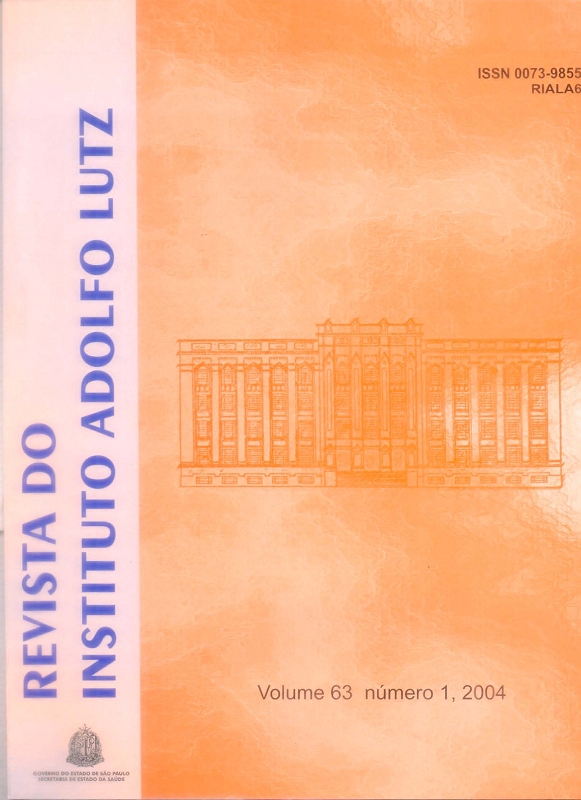Abstract
Trichothecenes are the mycotoxins produced by different Fusarium species. Some of them, such as deoxynivalenol (DON), nivalenol (NIV), diacetoxiscyrpenol (DAS), toxins T-2 (T2) and HT-2 (HT2), are natural contaminants of wheat and corn. Extraction, clean-up and derivatization steps were evaluated and optimized for simultaneous determination of DON, NIV, DAS, HT2 and T2 in corn and corn products samples by gas chromatography-mass spectrometry (GC/MS). Extraction with acetonitrile : water (84:16) followed by clean-up through MycoSep 227 column presented the best results for the five toxins analysed. Trifluoroacetic anhydride / sodium bicarbonate derivatization showed better detection and quantification for the trichothecenes studied by GC/MS. The recoveries ranged from 83.3 to 113.3% for DON, 84.6 to 114.5% for NIV, 52.1 to 122.7% for DAS, 71.1 to 95.9% for T2 and from 81.8 to 155.4% for HT2. The detection limits ranged from 20 to 50 ng/g for DON, from 10 to 40 ng/g for NIV, from 30 to 120 ng/g for DAS, from 20 to 100 ng/g for T2 and from 20 to 50 ng/g for HT2. The repeatability of the method had relative standard deviations ranging from 4.5 to 18.1 for DON, 2.5 to 15.4 for NIV, 3.4 to 48.1 for DAS, 3.1 to 14.4 for HT2 and from 6.4 to 47.3 for T2.
References
2. Furlong, E.B. Tricotecenos em trigo: um estudo de metodologia analítica, incidência, contaminação simultânea por outras micotoxinas e de alguns fatores que influem na produção no campo. Campinas, 1992. 120p. Tese (Doutor em Ciência de Alimentos) - Faculdade de Engenharia de Alimentos, Universidade Estadual de Campinas.
3. Furlong, E.B.; Valente Soares, L.M. Gas chromatographic method for quantification and confirmation of trichothecenes in wheat. JAOAC Int., 78 (2): 386-90, 1995.
4. Horwitz, W.; Kamps, L.R.; Boyder, K.W. Quality assurance in the analysis of foods for trace constituents. J. Assoc. Off. Anal. Chem., 63 (6): 1344-54, 1980.
5. Kientz,C.E.; Verweij, A. Trimethylsilylation and trifluoroacetylation of a number of trichothecenes followed by gas chromatographic analysis on fused-silica capillary columns. J. Chromatogr., 355: 229-40, 1986.
6. Krska,R. Performance of modern samples preparation techniques in the analysis odf Fusarium mycotoxins in cereals. J. Chromatogr. A, 815: 49-57, 1998.
7. Langseth, W.; Rundberget, T. Instrumental methods for determination of non macrocyclic trichothecenes in cereals, foodstuffs and cultures (review). J. Chromatogr. A, 815: 103-21, 1998.
8. Marochi, M.A., Valente Soares, L.M. Metodologia para determinação de tricotecenos e zearalenona em grãos. Bol. SBCTA,27(1):1-8, 1993
9. Marochi, M.A.; Valente Soares, L.M.; Furlani, R.P.Z. Testes confirmatórios para tricotecenos. Rev. Inst. Adolfo Lutz, 56 (2): 17-20, 1996.
10.Mclachlan, A. et al. Production of trichothecene mycotoxins by Australian Fusarium species. Food Addit. Contam., 9(6): 631-7, 1992.
11.Mirocha, C.J. et al. Mass spectra of selected trichothecenes. In: Modern methods in the analysis and structural elucidation of mycotoxins; Cole, R.J., Ed.; Academic Press: New York, 1986; pp.53-392.
12.Oliveira, A.Q. Tricotecenos em milho: uma avaliação de métodos analíticos e da incidência em milho pipoca. 2001. 132f. Dissertação (mestrado)-Faculdade de Engenharia de Alimentos, Universidade Estadual de Campinas, São Paulo, 2001.
13.Oliveira, A.Q.; Valente Soares, L.M. Avaliação de métodos para determinação de tricotecenos em milho por cromatografia gasosa. Rev. Inst. Adolfo Lutz, 60(2): 129-34, 2001.
14.Onji, Y. et al. Direct analysis of several Fusarium mycotoxins in cereals by capillary gas chromatography-mass spectrometry. J. Chromatogr.A, 815: 59-65, 1998.
15.Pascale, M.; Haidukowski, M.; Visconti, A. Determination of T-2 toxin in cereal grains by liquid chromatography with fluorescence detection after immunoaffinity column clean-up and derivatization with 1-anthroylnitrile. J. Chromatogr. A, 989(2): 257-64, 2003.
16.Plattner, R.D.; Beremand, M.N.; Powell, R.G. Analysis of trichothecene mycotoxins by mass spectrometry and tandem mass spectrometry. Tetrahedron, 45(8):2251-62, 1989.
17.Romer, T.R. Use of small charcoal/alumina cleanup columns in determination of trichothecene mycotoxin in food and feeds. J. Assoc. Off. Anal. Chem., 69(4): 599-703, 1986 18.Rosen, R.T.; Rosen, J.D. Quantification and confirmation of four Fusarium mycotoxins in corn by gas chromatography-mass spectrometry-selected ion monitoring. J. Chromatogr., 283: 22330, 1984.
19.Schothorst, R.C.; Jekel, A.A. Determination of trichothecenes in wheat by capillary gas chromatography with flame ionization detection. Food Chem., 73: 111-7, 2001. 20.Schollenberger, M.et al. Determination of eight trichothecenes by gas-chromatography-mass spectrometry after sample clean-up by a two-stage solid-phase extraction. J. Chromatogr. A, 815: 123-32, 1998.
21.Schwadorf,K.; Müller,H-M. Determination of trichothecenes in cereals by gas-chromatography with ion-trap detection. Chromatographya, 32 (3/4): 137-42, 1991
22.Snyder, A.P. Qualitative, quantitative and technological aspects of the trichotecenes mycotoxins mycotoxins. J. Food Prot., 49(7):.54469, 1986.
23.Tanaka, T. et al. A survey of the occurrence of nivalenol, deoxynivalenol and zearalenone in foodsstuffs and health foods in Japan. Food Addit. Contam., 2: 259-65,1985. 24.Tanaka, T. et al. Worldwide contamination of cereals by the Fusarium mycotoxins nivalenol, deoxynivalenol and zearalenone. 1. Survey of 19 countries. J. Agric. Food Chem., 36: 979-83, 1988.
25.Tanaka, T. et al. Simultaneous determination of trichothecene mycotoxins and zearalenone in cereals by gas chromatography-mass spectrometry. J. Chromatogr. A, 882: 23-8, 2000.
26.Taylor, J.K. Quality Assurance of Chemical Measurements. Chelsea/EUA:Lewis Publishers,Inc. 1987.329p.
27.Ueno, Y. Trichothecene: chemical, biological and toxicological aspects. In: UENO, Y. (Ed.). Development in Food Science. Tokyo: Elsevier, v.4, 1983.
28.Ueno, Y. Trichothecenes as environmental toxicants. Review in Environmental Toxicology 2, p.303-41, 1986.
29.Vékey, K. Mass Spectrometry and mass-selective detection in chromatography. J. Chromatogr. A, 921: 227-36, 2001.
30.Webb, K.; Sargent, M. The reliability of mass spec. for identification purposes. VAM Bull., 22:.12-4, 2000.
31.World Health Organization. Environmental Health Criteria 105. Selected Mycotoxins: Ochratoxins, Trichothecenes, Ergot. IPCS (International Programme on Chemical Safety). Geneva, 1990. Trichothecenes cap. 2, 1990, p: 71-164.

This work is licensed under a Creative Commons Attribution 4.0 International License.
Copyright (c) 2004 Revista do Instituto Adolfo Lutz
